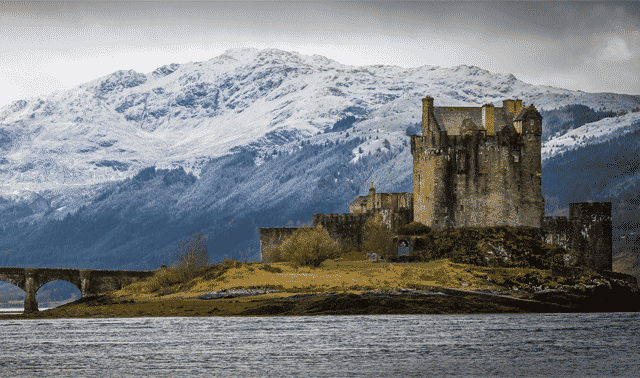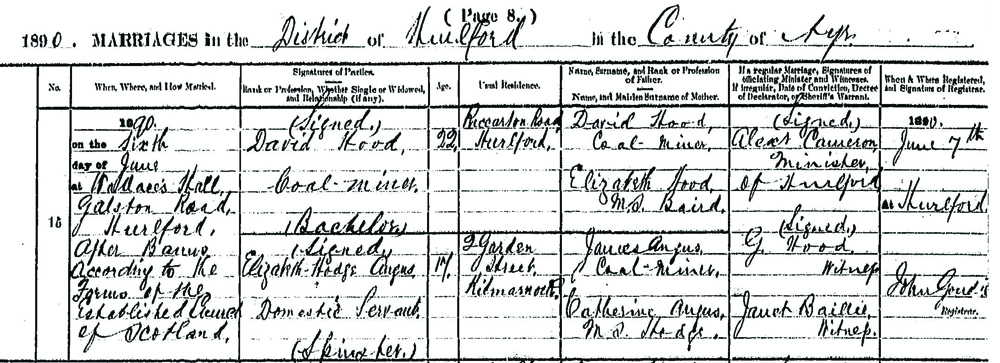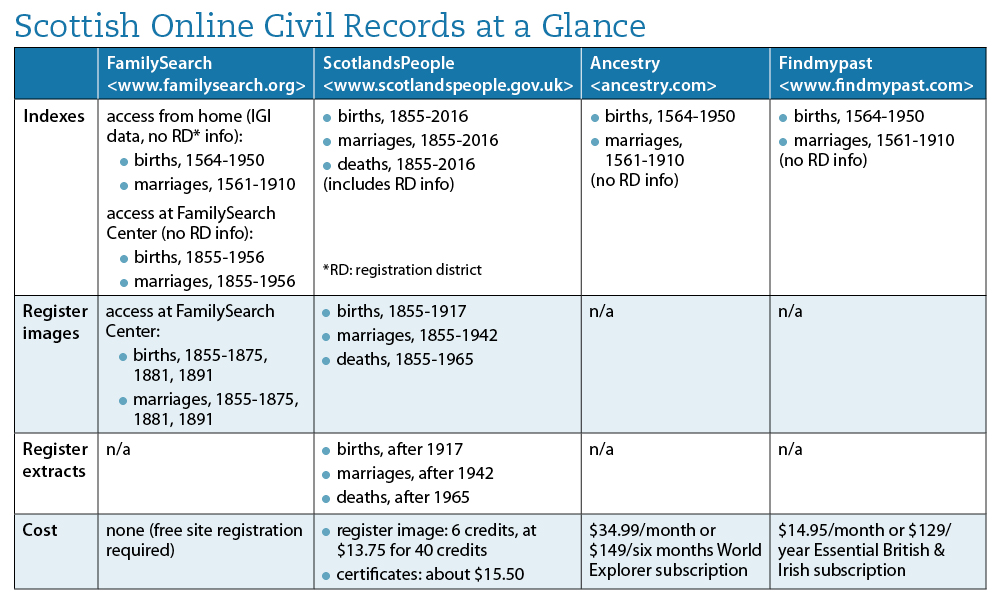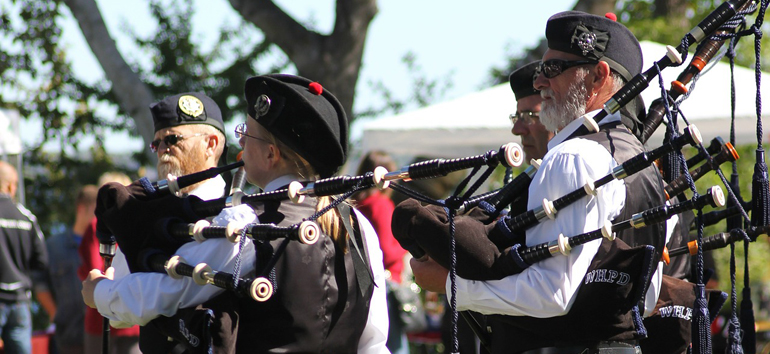Sign up for the Family Tree Newsletter Plus, you’ll receive our 10 Essential Genealogy Research Forms PDF as a special thank you!
Get Your Free Genealogy Forms
"*" indicates required fields

If you have Scottish roots, then Scottish Civil Records are a great genealogy resource. Before you can use them, you’ll first need to identify your immigrant ancestor and his network in US records and learn when he arrived and the name of his hometown in Scotland. Once once you have that information, you can turn your search to records in the home country. Then you’ll discover the people, places and events that marked your ancestor’s life in Scotland.
Having trouble finding your Scottish ancestors in the first place? Then our upcoming course, Great Scots: Find Your Scottish Ancestors was designed for you. Then you will be on your way to using Scottish Civil Records, an important tool for Scottish Genealogy.
If your ancestor was in Scotland after 1855, start your search with statutory (or civil) birth, marriage and death records. In this excerpt from my book The Family Tree Scottish Genealogy Guide, we’ll explore the information contained in these records, plus how you can acquire them from places like the ScotlandsPeople Centre. Let’s take the high road to your roots.
Information in Scottish Civil Records
In the 19th century, Scotland’s lack of consistent birth records became problematic. It was difficult for lawyers to prove inheritance cases and for factories to show they weren’t hiring underage employees. To remedy this, Parliament passed the Registration of Births, Deaths, and Marriages (Scotland) Act in 1854. The law, which took effect Jan. 1, 1855, made registration of births, marriages and deaths free and compulsory, while leveling fines for registering these events late.
These civil records supplemented the records that parishes already kept. And civil registration district boundaries usually followed parish boundaries. The earliest registrars in each district were the session clerks who worked under the town council. Each registration district was assigned a number, which also was tied to the parent parish. Having the session clerk embedded in the community helped the government ensure all events were recorded. Because of this, a registrar in a small community would’ve been aware of most births, marriages and deaths. And as a result, his records were more likely to be complete.
Here’s what you can expect to find in each kind of record.
Births

By law, parents had to register the births of their children within 21 days in the district where the birth occurred. The birth register contains a host of valuable information: name of the child; place, date and time of birth; names of the parents; father’s occupation; mother’s maiden name; and the place, month and year of the parents’ marriage (pointing you to marriage records and registers). The informant had to sign the registration form, potentially adding a member of your ancestor’s network you can research.
Children with unmarried parents are marked as illegitimate until 1919. These entries have only the mother’s name, though the father could be included if he and the mother appeared at the same time to register the child.
Marriages

Historically, Scotland recognized two kinds of marriages—regular and irregular. Regular marriages fulfilled the standard requirements for a wedding ceremony that was performed by a minister in front of two witnesses, after the marriage banns had been read for three consecutive Sundays in the home parishes of the bride and groom.
Irregular marriages required no minister, witnesses or banns. A couple simply consented and agreed to be married. The couple still had to provide evidence of this agreement, with at least two witnesses if the evidence was only oral. After 1855, couples pursuing an irregular marriage had to present their evidence to the sheriff within three months. Over time, this type of marriage became unpopular. It was banned in England in 1754, but remained legal in Scotland until 1939. You can find some surviving registers of irregular marriages at the National Records of Scotland.
The statutory marriage record is quite informative (see an example above). It lists the names, ages and occupations of the bride and groom; their marital statuses (spinster, widowed, etc.); the date and location of the marriage; and the religious rites associated with the ceremony. You’ll also find the names of their parents with the fathers’ occupations and mothers’ maiden names, the minister’s name, and the identities of two witnesses.
Deaths

Like births, deaths were to be registered in the district where the event occurred, preferably by an informant who was present. Registration had to happen within eight days, and burial couldn’t take place until the funeral home received a death certificate. The death record includes the deceased’s name, gender, age and occupation. Also recorded are the deceased’s marital status and parents’ names, with mother’s maiden name and father’s occupation. The record may include the name of a spouse, along with a cause of death (helpful if you’re compiling a medical family history).
Informants for death records had to sign and identify the relationship to the deceased. This fact is useful, as it helps you to gauge the accuracy of the information in the register. For example, the deceased’s adult child is more likely to know about the deceased than a landlord.
Finding Scottish Civil Records
You can find civil registration records at two major free-to-search websites, FamilySearch and ScotlandsPeople. Both require you to register with the site. For the former option, you’ll need to either visit a local FamilySearch Center (keep reading for details) or do some legwork to find microfilmed records. At ScotlandsPeople, you can pay to view original records. It’s the only resource that gives you access to the statutory death records.
In addition, you can also find Scottish civil records on two subscription websites: Ancestry.com and Findmypast. However, you can view the same information on free websites. See a summary below.
Scottish Online Civil Records at a Glance

FamilySearch
To view this site’s digitized collection of Scottish births, marriages and deaths, you must use the computers at a FamilySearch Center. The collection has record images for select years—1855 to 1875, 1881 and 1891—as well as indexes for 1855 to 1956. These indexes were handwritten from 1855 to 1865 and printed from 1866 onward. Recordkeepers indexed males and females separately (even if bound in the same volume), so you’ll need to look in different sections to find the same family, and cross-reference the bride and groom in marriage records. Index data include:
- Birth and baptism: child’s name, date and place of birth, gender and names of parents
- Marriage: names of the couple and the date and place of marriage
If you’re searching the FamilySearch website from home (or you subscribe to Ancestry or Findmypast), you can access two index-only collections of Scottish registrations: Scotland Births and Baptisms, 1564-1950, and Scotland Marriages, 1561-1910. These indexes include information that other researchers have submitted to the International Genealogical Index (IGI). FamilySearch cautions that the data may not be complete, and you should verify any claims by searching original records.
Neither index—the digitized printed version or the IGI data you can search from home—gives the registration district number or the entry number. These are crucial details for accessing the actual record. Many FamilySearch citations refer to microfilm No. 6035516, the Register of Births, Marriages and Deaths of Scotland. This publication can help you identify the registration district number for the event location and the years held by FamilySearch. This source isn’t yet available digitally. But if you can access it on microfilm at the Family History Library in Salt Lake City, look up your parish/registration district on the alphabetical list, then find the county and years you need. Identify the roll of microfilm that covers that place and time period, then search for this microfilm number in the FamilySearch online catalog.
You can view a PDF guide to registration districts from the National Records of Scotland. It has an alphabetical listing of parishes, the county, years of coverage, and the “old” and current registration district numbers (you’ll likely need only the old one).
Once you know the registration district number and year you need, visit the FamilySearch catalog’s Scotland, Civil Registration page to identify the right microfilm amongst the more than 4,200 rolls. At the top of the page is an alphabetical listing of the parishes or districts and their corresponding numbers. Scroll down to the listing of microfilm rolls by birth, then marriages, then deaths. If you’re in a FamilySearch Center, click the camera icon to access the records. (At home, write down the microfilm number, so you can easily search the catalog for it next time you’re at a FamilySearch Center.)
ScotlandsPeople
ScotlandsPeople is a government website operated by National Records of Scotland. The site’s Statutory Registration collection has indexes and record images (or extracts, for more-recent records) from 1855 through 2016. Viewing index information is free, but you must purchase credits to see record images. Credits cost £7.50 (about $10.50) for 30, or £10 (about $13.75) for 40. Unused credits expire in two years unless you buy more. (See the site’s charges details page for more.) You’ll pay separately for birth, marriage, death and divorce certificates.
Access statutory registers on ScotlandsPeople from the Advanced Search page. The birth index includes the name of the child, gender and birth year. Note that parents’ names aren’t indexed here. So if you can’t determine whether a birth record is your ancestor’s, run the same search at FamilySearch, where results include the name of the child’s parents.
You’ll also get the registration district name (RD), and a reference number. The reference number is the district number, plus the entry number. For example, John MacDonald died in 1889 in Moy, and his record has the reference number 105/4. You would then look for registration district 105 for the year 1889, and John MacDonald would be the fourth entry. A reference with more numbers indicates that the registration district split. For example, the Riccarton registration district was No. 611. In 1887, it divided into two: Riccarton, 611/1; and Hurlford, 611/2.
The marriage index shows the names of the couple, their year of marriage, the RD and the reference number. Likewise, your search results for death records show the name of the deceased, age at death, year of death, registration district and reference number. The index should list a married woman under both her birth name and married names. If she married more than once, however, she may not be indexed under all her married names. This double (or even more) indexing should help you locate your female ancestors in either the ScotlandsPeople database or the printed indexes at FamilySearch. Some entries include the maiden name of the deceased’s mother, which can help you verify you have the right record.
Once you’ve found the index entry you want, look for a blue box with the number of credits needed to view the original register (six credits, about $3). Downloaded images of original registers include citation information.
Some records fall under privacy restrictions: 100 years for births, 75 years for marriages, or 50 years for deaths. For these records, the download link directs you to order a certificate of extracted information from the register (also available via the Certificate Search page). These cost £12; about $15.50. You also can order certificates for earlier records, but you’ll want to view the original register whenever possible. Now, with your relatives’ statutory records in hand, you’re on the high road to your Scottish ancestry.
A version of this article appeared in the December 2018 issue of Family Tree Magazine.
FamilyTreeMagazine.com is a participant in affiliate programs through Amazon and Genealogical Publishing Co. It provides a means for this site to earn advertising fees, by advertising and linking to affiliated websites.
ADVERTISEMENT




